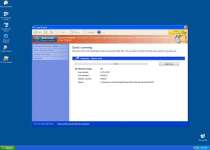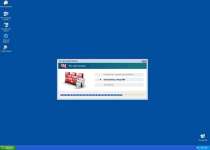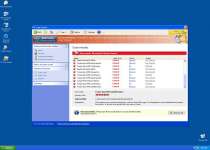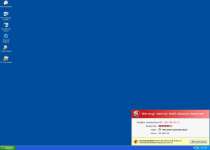PC Live Guard
Posted: December 7, 2009
Threat Metric
The following fields listed on the Threat Meter containing a specific value, are explained in detail below:
Threat Level: The threat level scale goes from 1 to 10 where 10 is the highest level of severity and 1 is the lowest level of severity. Each specific level is relative to the threat's consistent assessed behaviors collected from SpyHunter's risk assessment model.
Detection Count: The collective number of confirmed and suspected cases of a particular malware threat. The detection count is calculated from infected PCs retrieved from diagnostic and scan log reports generated by SpyHunter.
Volume Count: Similar to the detection count, the Volume Count is specifically based on the number of confirmed and suspected threats infecting systems on a daily basis. High volume counts usually represent a popular threat but may or may not have infected a large number of systems. High detection count threats could lay dormant and have a low volume count. Criteria for Volume Count is relative to a daily detection count.
Trend Path: The Trend Path, utilizing an up arrow, down arrow or equal symbol, represents the level of recent movement of a particular threat. Up arrows represent an increase, down arrows represent a decline and the equal symbol represent no change to a threat's recent movement.
% Impact (Last 7 Days): This demonstrates a 7-day period change in the frequency of a malware threat infecting PCs. The percentage impact correlates directly to the current Trend Path to determine a rise or decline in the percentage.
| Threat Level: | 10/10 |
|---|---|
| Infected PCs: | 49 |
| First Seen: | January 8, 2010 |
|---|---|
| Last Seen: | January 23, 2022 |
| OS(es) Affected: | Windows |
 PC Live Guard is a rogue spyware program from the same family as Additional Guard, System Defender, and a number of other malicious programs. Once installed PC Live Guard floods the system with corrupt files and then detects them in an effort to scare you into handing over money.
PC Live Guard is a rogue spyware program from the same family as Additional Guard, System Defender, and a number of other malicious programs. Once installed PC Live Guard floods the system with corrupt files and then detects them in an effort to scare you into handing over money.
PC Live Guard poses a severe threat to any computer and should not be trusted, instead this cyber menace must be terminated immediately.
Aliases
More aliases (33)
Use SpyHunter to Detect and Remove PC Threats
If you are concerned that malware or PC threats similar to PC Live Guard may have infected your computer, we recommend you start an in-depth system scan with SpyHunter. SpyHunter is an advanced malware protection and remediation application that offers subscribers a comprehensive method for protecting PCs from malware, in addition to providing one-on-one technical support service.
* See Free Trial offer below. EULA and Privacy/Cookie Policy.
Why can't I open any program including SpyHunter? You may have a malware file running in memory that kills any programs that you try to launch on your PC. Tip: Download SpyHunter from a clean computer, copy it to a USB thumb drive, DVD or CD, then install it on the infected PC and run SpyHunter's malware scanner.
Technical Details
File System Modifications
Tutorials: If you wish to learn how to remove malware components manually, you can read the tutorials on how to find malware, kill unwanted processes, remove malicious DLLs and delete other harmful files. Always be sure to back up your PC before making any changes.
The following files were created in the system:PC7aee.exe
File name: PC7aee.exeSize: 1.92 MB (1925632 bytes)
MD5: 590b60962326a77b922341221216b191
Detection count: 35
File type: Executable File
Mime Type: unknown/exe
Group: Malware file
Last Updated: January 8, 2010
PCce94.exe
File name: PCce94.exeSize: 1.91 MB (1917440 bytes)
MD5: ecca12e4192e09a4a20227c06f1c2dc6
Detection count: 35
File type: Executable File
Mime Type: unknown/exe
Group: Malware file
Last Updated: January 26, 2010
PC0a1a.exe
File name: PC0a1a.exeSize: 1.94 MB (1943552 bytes)
MD5: d05f6d5220a7f51ff946e250107d1ac2
Detection count: 34
File type: Executable File
Mime Type: unknown/exe
Group: Malware file
Last Updated: January 8, 2010
PCccec.exe
File name: PCccec.exeSize: 1.91 MB (1914368 bytes)
MD5: bc917c276905c37bdbed031a37dca870
Detection count: 33
File type: Executable File
Mime Type: unknown/exe
Group: Malware file
Last Updated: January 8, 2010
PC11e0.exe
File name: PC11e0.exeSize: 1.91 MB (1916928 bytes)
MD5: 19d004006d780a44c1e4d94b952ce05a
Detection count: 32
File type: Executable File
Mime Type: unknown/exe
Group: Malware file
Last Updated: January 8, 2010
C:\Documents and Settings\<username>\Documenti\Download\***s Rogue Pack\***'s Rogue Pack\PC Live Guard.exe
File name: PC Live Guard.exeSize: 1.91 MB (1916928 bytes)
MD5: 1359adb9acb9971a2508dbdd7f3471b1
Detection count: 23
File type: Executable File
Mime Type: unknown/exe
Path: C:\Documents and Settings\<username>\Documenti\Download\***s Rogue Pack\***'s Rogue Pack\PC Live Guard.exe
Group: Malware file
Last Updated: January 23, 2022
PC0f69.exe
File name: PC0f69.exeSize: 1.91 MB (1916928 bytes)
MD5: 8e27e30e3606afd6b80745d18d071bbc
Detection count: 20
File type: Executable File
Mime Type: unknown/exe
Group: Malware file
Last Updated: January 21, 2010




Leave a Reply
Please note that we are not able to assist with billing and support issues regarding SpyHunter or other products. If you're having issues with SpyHunter, please get in touch with SpyHunter customer support through your SpyHunter . If you have SpyHunter billing questions, we recommend you check the Billing FAQ. For general suggestions or feedback, contact us.